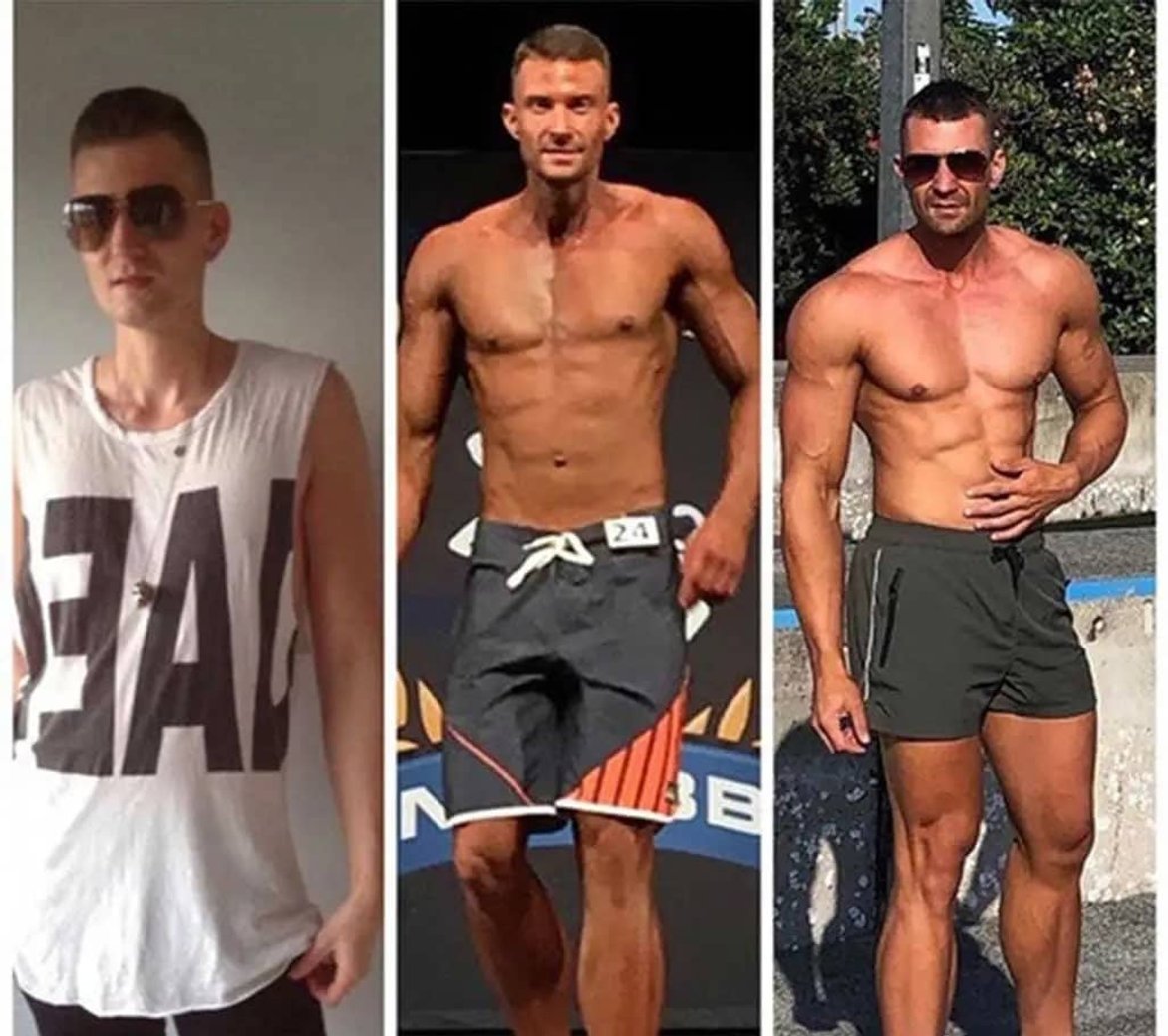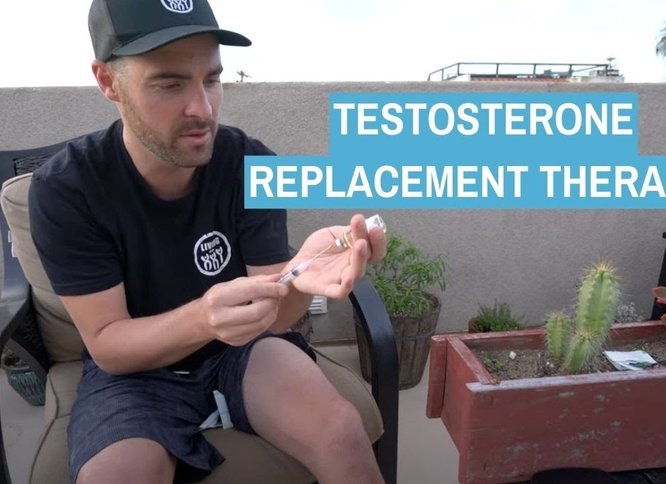
Guide to Testosterone Therapies For Men With XXY
Low testosterone is a common symptom of Klinefelter syndrome (47, XXY), however, the severity of the hormonal imbalance can vary widely among individuals with this condition. Some men are able to produce enough testosterone naturally, while others may require added support at different points in life. For individuals with symptoms such as reduced energy, slow puberty, or decreased muscle tone, testosterone therapy might offer significant benefits.
Should you start taking testosterone? If yes, when, and how? These are personal decisions, with no universal right or wrong answer. As you make this decision, your individual comfort and personal goals will factor significantly into the equation. A doctor can help interpret your lab results and discuss expected physical changes. We highly recommend engaging with other members of our XXY community and learning from their experiences as you consider whether or not testosterone therapy is the right path forward for you.
Stories From Our Community
Testosterone Replacement Therapy (TRT)
Here are some of the current options for Testosterone Replacement Therapy. We do not give medical advice and it is recommended that you consult with your doctor.
Read MorePuberty Hormones In Klinefelter Syndrome
Here we have the Extraordinary Kids Clinic, a specialty clinic for children with XXY and other X and Y variations. I will review some of the most common questions.
Read MoreYoung Adult Klinefelter Life Story
Jason noticed unexpected body changes. Despite an active lifestyle he began developing breast tissue as young adult Klinefelter diagnosis.
Read More
Do Those Diagnosed With Klinefelter Syndrome Need Testosterone Replacement?

Discussion of Testosterone During Puberty
For boys with XXY, puberty sometimes progresses more slowly or less fully than it does for their peers. The adolescent body produces testosterone to spark growth spurts, voice changes, muscle development, and the growth of facial hair. When these signs of puberty appear late or remain mild, doctors may suggest small amounts of supplemental testosterone, adjusted as needed. The goal of therapy at this time is simply to provide enough hormonal support to trigger natural physical and emotional growth, not to rush development. It is about responding to what the body needs at this important stage, keeping in mind that every body moves at a different pace. Not all boys with XXY will require testosterone therapy during puberty, so it is important to counsel with your provider regarding this option. This phase of care is usually managed by a pediatric endocrinologist.

Ongoing Testosterone Use in Adults With XXY
In adulthood, some men with XXY continue therapy they began earlier, while others start later in life when low testosterone symptoms become more noticeable. These symptoms can include low stamina, mood changes, reduced libido, or gradual muscle loss. Starting treatment as an adult still offers important benefits, from better energy levels to stronger bones.
Doctors usually monitor progress with regular lab work and check-ins. Testosterone therapy can also help reduce body fat, improve focus, and support cardiovascular health. According to study published in 2023 , adult men with XXY who used testosterone saw improvements in lean muscle mass, bone strength, and fatigue. These effects can make a big difference in daily life.
Additionally, a resource in Oxford Academics highlighted the likelihood of greater insulin sensitivity in men who have started testosterone therapy. This matters because hypogonadal men may struggle with body composition and other side effects they wish to confront.
Types of Testosterone Therapies for Men With XXY
Speak with your doctor and other individuals who are living with XXY to identify the best fit based on your lifestyle, goals, and comfort level.
Testosterone Injections
Injections are one of the most common approaches. They’re either given in a muscle (like the thigh or glute) or just under the skin. Intramuscular versions, such as testosterone enanthate or testosterone cypionate, are often used every week or two. A long-acting form called testosterone undecanoate requires less frequent doses but may need to be given in a clinic.
Subcutaneous injections involve a smaller needle and can be easier to self-administer. Many men with XXY report that once they learn the routine, it becomes a manageable part of life.
Testosterone Gels and Creams
For those who don’t want to use needles, topical testosterone may be a good fit. Gels like AndroGel, Testim, and Fortesta are applied once a day to clean, dry skin. Each brand recommends slightly different application sites, like the shoulders, upper arms, abdomen, or thighs.
These treatments allow for daily hormone levels that mirror the body’s natural rhythm more closely than other methods. However, they do require caution—unintended transfer of testosterone to others through skin contact is a concern, especially for partners or children.
What Is Bioidentical Testosterone?
Bioidentical testosterone refers to hormones made to match the structure of testosterone produced naturally by the body. These are often found in compounded creams prepared at specialized pharmacies. Some people choose bioidentical options for their perceived natural alignment with the body’s biology. While effective, they should still be monitored carefully. It’s always best to consult a medical provider and use a pharmacy known for quality and safety
Testosterone Patches
Testosterone patches like Androderm are worn on the skin and replaced every 24 hours. They provide a steady hormone release throughout the day. Although effective, they can sometimes cause skin irritation or discomfort at the application site.
Testosterone Pellets
Pellets offer a longer-term solution. These small implants (about the size of a grain of rice) are inserted under the skin during a quick in-office procedure and release testosterone gradually for three to six months. While they offer convenience, the process is more invasive and not easily adjusted after insertion.
Oral Testosterone Therapy
Oral testosterone, such as testosterone undecanoate (available as Andriol in some countries), is absorbed through the lymphatic system rather than the liver. This reduces the risk of liver-related side effects. While not as commonly prescribed in the U.S., it may suit men looking for a needle-free, non-topical option.
Nasal Gel
Nasal testosterone, like Natesto, is applied inside the nostrils two or three times per day. It avoids the skin-transfer risk of gels and doesn’t require injections. However, it needs frequent daily dosing, which may not appeal to everyone.
Combination Therapies
Some treatment plans include more than just testosterone. For example, adding human chorionic gonadotropin (hCG) can help stimulate natural hormone production or preserve fertility. These approaches are more common in younger men or those considering parenthood. Working with a specialist helps tailor the plan to individual goals.

The Costs Associated With Ongoing Testosterone Therapy
The price of testosterone therapy can vary a lot. Injections like testosterone cypionate are usually the least expensive, sometimes costing between $20 and $100 a month when using generic versions. Gels and creams, especially brand-name ones, tend to be more costly, ranging from $200 to $500 monthly if not covered by insurance. Pellets can run over $1,000 per treatment due to the surgical aspect.
Insurance plans often cover testosterone therapy if it’s prescribed for low testosterone caused by Klinefelter syndrome or another diagnosed condition. It’s important to check whether your plan pays for the medication itself, the doctor’s visits, and any administration fees. For example, some plans may cover the medication but not pellet insertion procedures.
Government programs like Medicaid may also help. Coverage varies by state, but Medicaid’s prescription drug benefit includes hormone therapies in many cases. For more details, you can visit this page on Medicaid’s official site.
While Klinefelter syndrome is not automatically classified as a disability, some people may qualify for government support if symptoms make it hard to work or manage everyday tasks. Social Security Disability Insurance (SSDI) and Medicaid benefits may be available with proper documentation and a physician’s evaluation. Veterans receiving care through the VA system can also access testosterone therapy if it’s medically necessary.

How to Choose the Right Form of Testosterone
Choosing a course of treatment involves finding the right fit for your day-to-day routine. Injections offer reliability and strong results, but require consistent planning and the ability to give yourself a shot at home (or find someone else to do it for you). Gels and patches are easy to apply, but can irritate the skin or accidentally transfer to someone else with physical contact. Pellets provide months of coverage with minimal effort, but they involve a minor surgical procedure every 3-6 months.
Talk through all the options with your doctor. Bring up your goals, your comfort level with each method, and any concerns about side effects or routines. You may also want to ask about how often blood tests will be needed and what symptoms to look for as your body adjusts.
Testosterone therapy is one of many tools available to help men with XXY feel their best. Many men with Klinefelter syndrome who receive testosterone see improvements in body image, cognitive clarity, and mood, and while these effects may vary from person to person, it’s certainly worth exploring.
Stay Informed With Every Update
Sign up to receive our latest stories, educational resources, and opportunities to connect with others in the XXY community.
Join The Community Today


